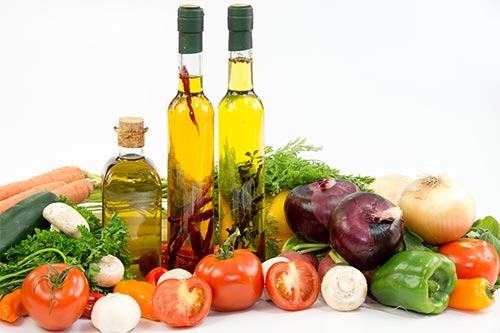 The Mediterranean diet is known for boosting health and lowering risk for chronic diseases like heart disease, high blood pressure and certain cancers. This should not be thought of as a temporary diet, but rather a lifestyle change for improved eating habits and better health. It can be easy to incorporate some components of the Mediterranean diet into your routine — and now is the perfect time to start.
The Mediterranean diet is known for boosting health and lowering risk for chronic diseases like heart disease, high blood pressure and certain cancers. This should not be thought of as a temporary diet, but rather a lifestyle change for improved eating habits and better health. It can be easy to incorporate some components of the Mediterranean diet into your routine — and now is the perfect time to start.
The Mediterranean diet is characterized by an emphasis on plant foods such as grains, vegetables and fruits. Olives, olive oil, nuts, beans, legumes, seeds and herbs and spices are also part of the Mediterranean eating style.
Grains should be mostly whole grains and can include whole-wheat breads, whole-wheat pasta, oats, brown rice, couscous, quinoa or barley, among others.
Fruits and vegetables can be fresh, frozen or canned. The nutrients are similar between the three different forms. Canned vegetables can have more sodium, so rinse before using or buy lower-sodium options. Fruits and vegetables can be cooked or eaten raw.
Olives and olive oil are staples of the Mediterranean eating style. Olive oil is the main source of fat and is used in cooking, as salad dressing, as a light drizzle on vegetables or as a dip for bread. Olive oil is higher in heart-healthy unsaturated fats and should replace saturated fats like butter or margarine.
Nuts, beans, legumes and seeds are the main sources of protein, healthy fats and fiber. Common beans include chickpeas (garbanzo beans), cannellini beans, kidney beans, lentils and black beans. Nuts are good as a snack, on a salad or added to other dishes.
Herbs and spices add flavor and aroma to foods. They reduce the need for salt and can be rich in health-promoting antioxidants.
Here are some ways you can incorporate Mediterranean eating into your lifestyle:
- Make sure half of your plate is a mixture of fruits and vegetables.
- Try a new whole grain such as barley, quinoa or couscous. Make an easy whole-grain salad with grains, vegetables of your choice (bell peppers, tomatoes, corn or carrots are good choices), beans for protein, some herbs and spices for flavor and an olive oil-based dressing (see recipe below).
- Switch out saturated fats like butter, lard or shortening for olive oil. Instead of your normal salad dressing, try an olive oil-based one like the recipe below.
- Experiment with beans or nuts in your recipes.
- Swap out salt for other herbs or seasonings like garlic, oregano, basil, parsley, cilantro, etc.
Homemade salad dressing recipe:
- 2 parts olive oil or canola oil
- 1 part acid, such as red wine vinegar, cider vinegar, lemon juice, lime juice or Dijon mustard (or a mixture of more than one)
- Salt and pepper or other seasonings
The Mediterranean lifestyle also recognizes the importance of being physically active, and enjoying meals with family and friends.